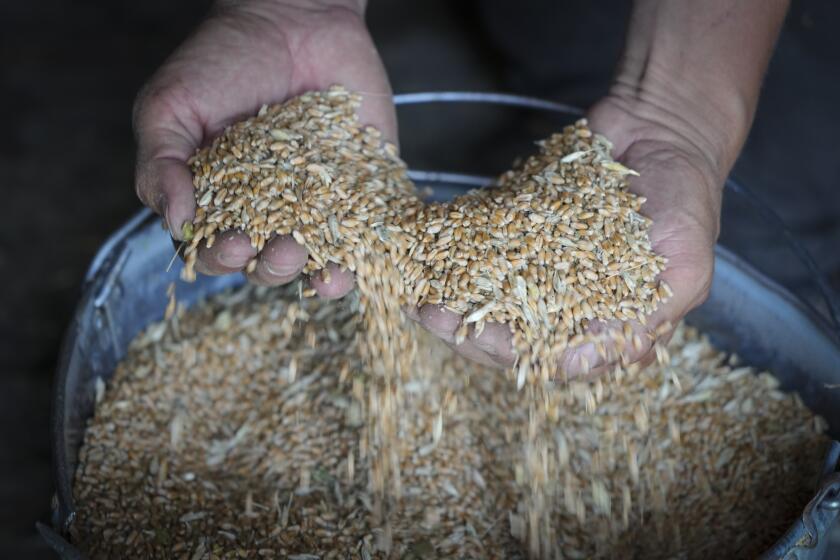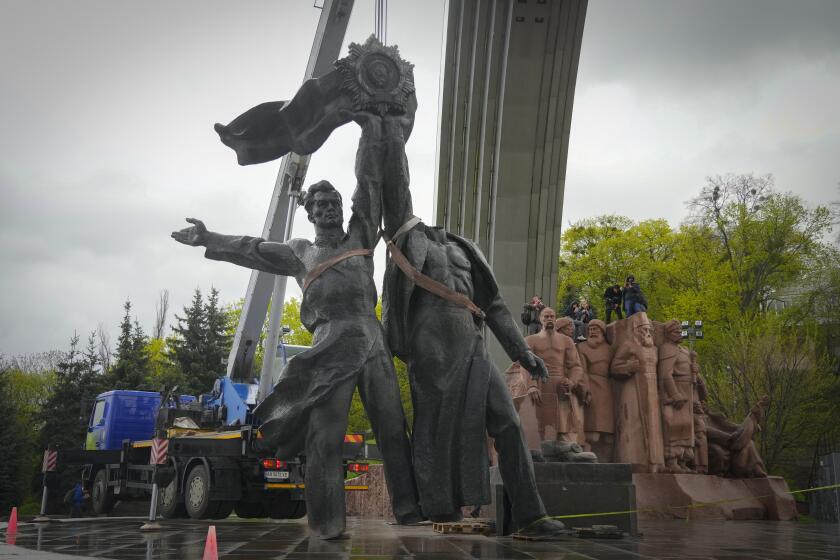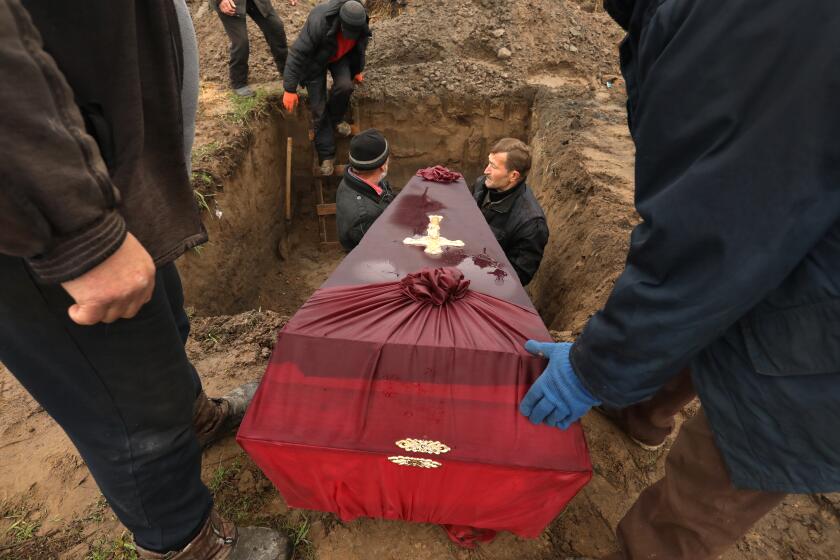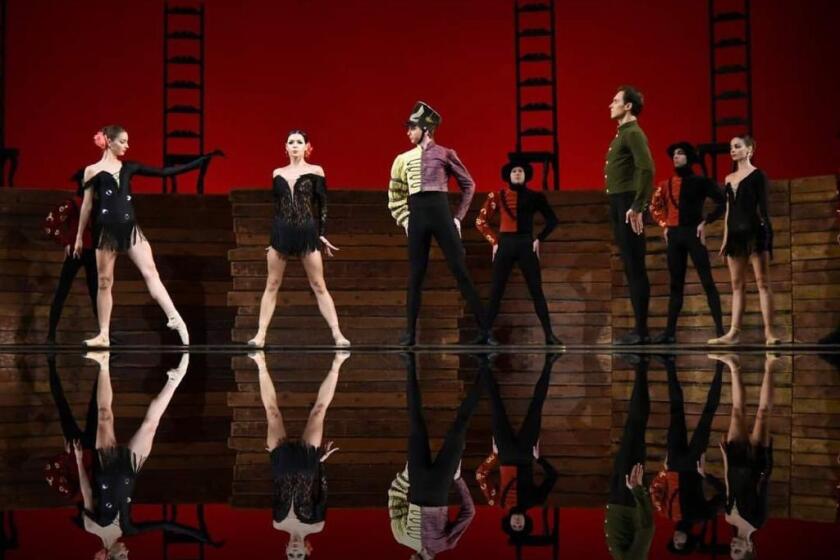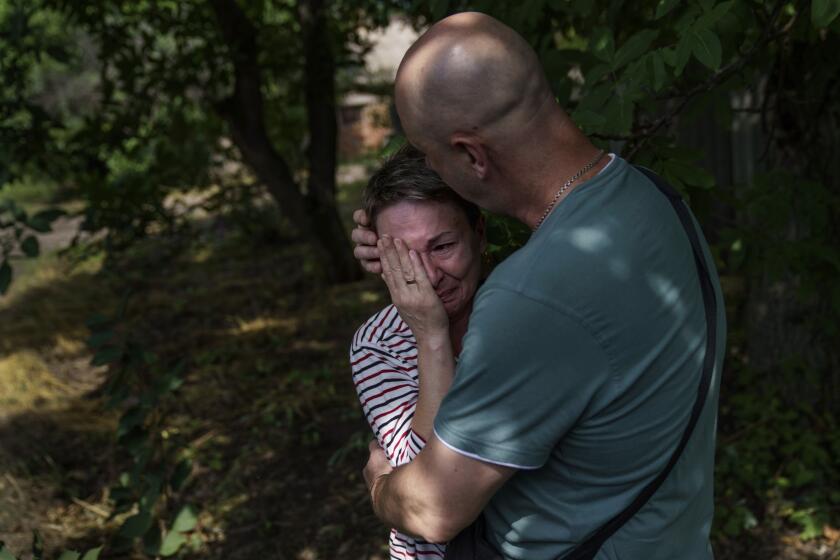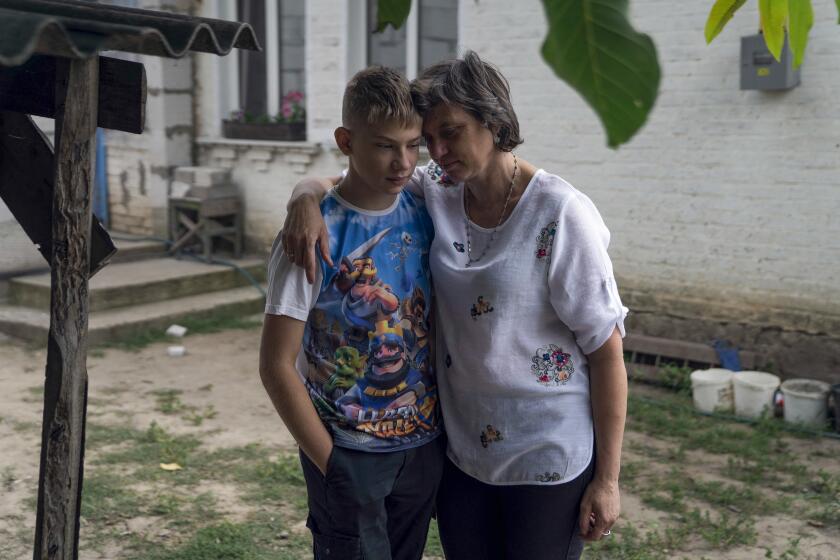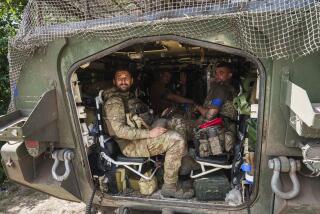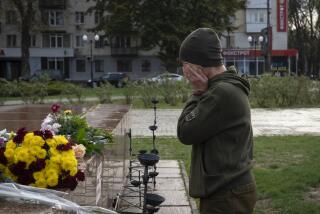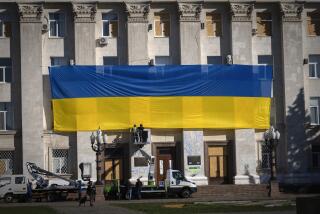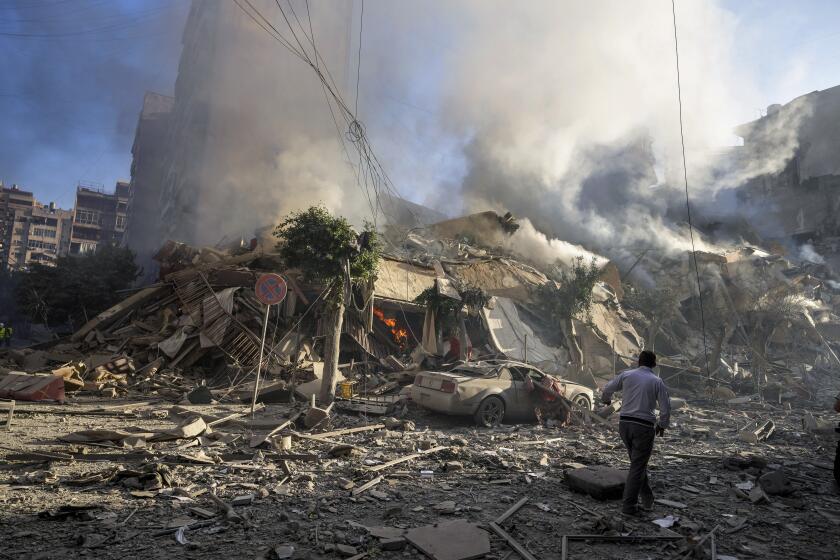Killing pro-Moscow officials. Blowing up bridges. Ukraine’s guerrillas take up the fight
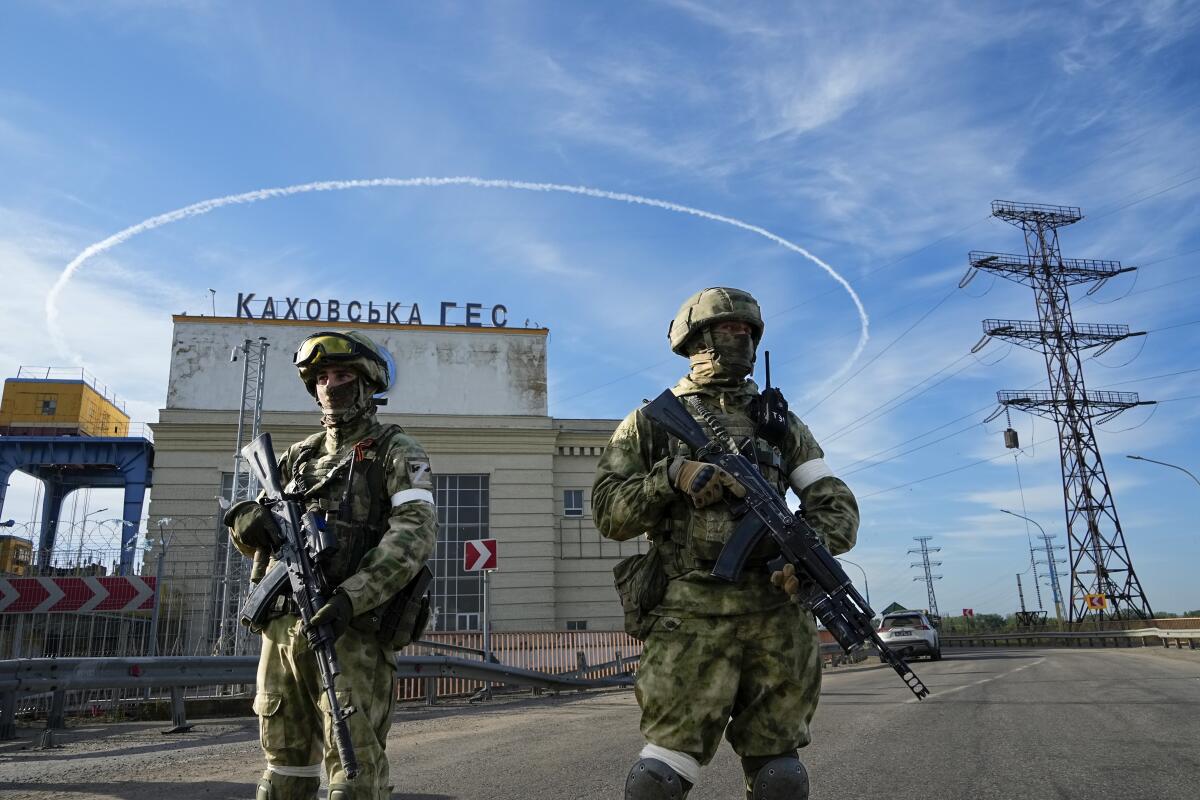
KYIV, Ukraine — In a growing challenge to Russia’s grip on occupied areas of southeastern Ukraine, guerrilla forces loyal to Kyiv are killing pro-Moscow officials, blowing up bridges and trains, and helping the Ukrainian military by identifying key targets.
The spreading resistance has eroded Kremlin control of those areas and threatened its plans to hold referendums in various cities as a move toward annexation by Russia.
“Our goal is to make life unbearable for the Russian occupiers and use any means to derail their plans,” said Andriy, a 32-year-old coordinator of the guerrilla movement in the southern Kherson region.
A member of the Zhovta Strichka — or “Yellow Ribbon” — resistance group, Andriy spoke to the Associated Press on condition that he not be fully identified, to avoid being tracked down by the Russians. The group takes its name from one of the two national colors of Ukraine, and its members use ribbons of that hue to mark potential targets for guerrilla attacks.
Ukrainian troops recently used a U.S.-supplied multiple-rocket launcher known as HIMARS to hit a strategic bridge on the Dnieper River in Kherson, severing the Russians’ main supply link. The city of 500,000 people, seized by Russian troops early in the war, has been flooded with leaflets from the resistance, threatening Moscow-backed officials.
Just before the bridge attack, leaflets appeared, saying: “If HIMARS can’t do it, a partisan will help.”
Russia’s invasion of Ukraine has upended the operations of what was the world’s fourth-largest grain exporter, with global consequences.
“We are giving the Ukrainian military precise coordinates for various targets, and the guerrillas’ assistance makes the new long-range weapons, particularly HIMARS, even more powerful,” Andriy told the AP. “We are invisible behind the Russian lines, and this is our strength.”
As Ukrainian forces step up attacks in the region and reclaim some areas west of the Dnieper, the guerrilla activity also has increased.
They coordinate with the Ukrainian military’s Special Operations Forces, which helps them develop strategies and tactics. Those forces also select targets and have set up a website with tips on how to organize resistance, prepare ambushes and elude arrest. A network of weapons caches and secret hideouts was established in occupied areas.
Bombs have been placed near administrative buildings, at officials’ homes and even on their routes to work.
As war rages, streets bearing names of famous Russians strike a discordant note for Ukraine
An explosive placed on a tree went off as a vehicle carrying Kherson prison chief Yevgeny Sobolev passed by; he survived the attack. A police vehicle was hit by a shrapnel bomb, seriously wounding two officers, one of whom later died. The deputy head of the local administration in Nova Kakhovka died of wounds after being gunned down over the weekend.
Guerrillas have repeatedly tried to kill Vladimir Saldo, the head of the Kherson region’s Russia-backed temporary administration, offering a bounty of 1 million hryvnias (about $25,000). His assistant, Pavel Slobodchikov, was shot and killed in his vehicle, and another official, Dmytry Savluchenko, was killed by a car bomb.
The attacks have prompted Moscow to send anti-guerrilla units to Kherson, Saldo said.
“Every day, special units from Russia detect two or three caches with weapons for terrorist activities,” Saldo said on his messaging app channel. “The seizure of weapons help reduce the threat of sabotage.”
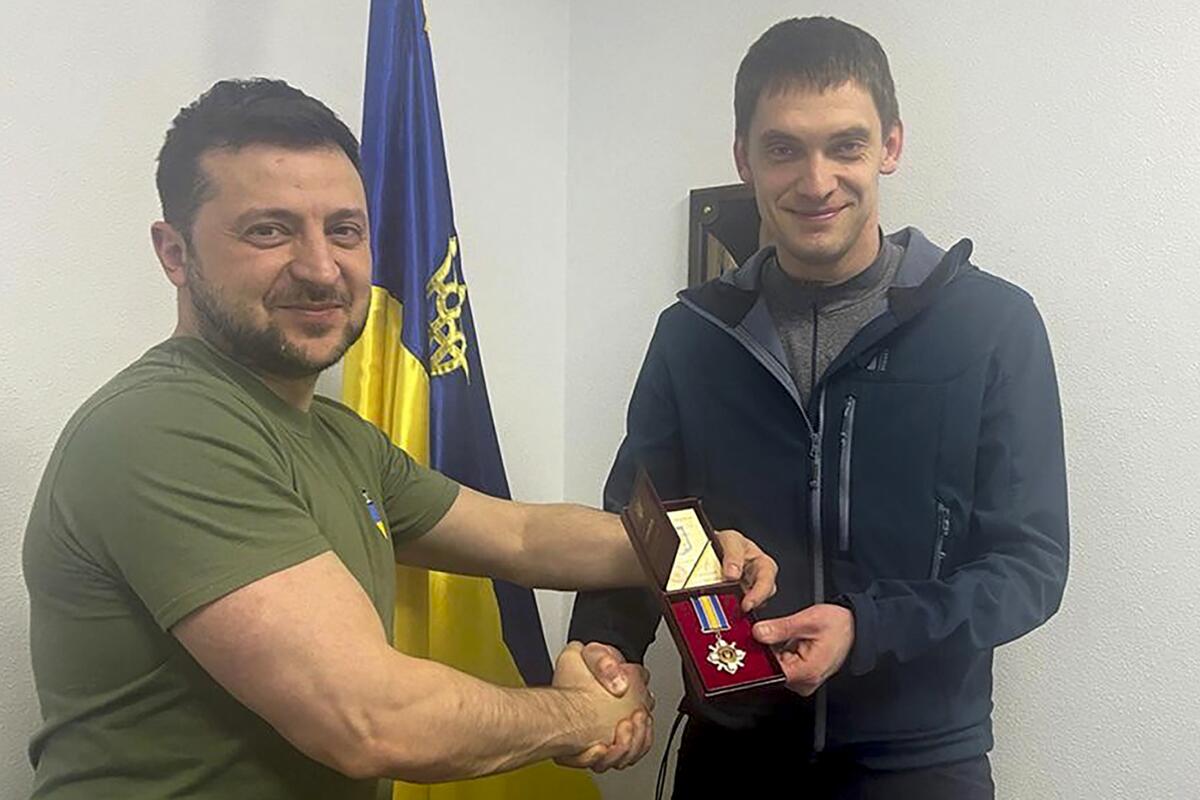
Early in the occupation, thousands of residents staged peaceful protests. But the Russian military quickly disbanded them and arrested activists, radicalizing the resistance.
Wedding photographer-turned-activist Oleksandr Kharchikov, 41, of Skadovsk, said he was beaten and tortured after being arrested in a Russian security sweep.
“The Russians tortured me for a long time. They beat me with a baseball bat. They pinched my fingers with pliers and tortured me with electric shocks,” Kharchikov said in a telephone interview. “I suffered a concussion and a broken rib, but I didn’t give them any information, and that saved me.”
Kharchikov spent 155 days under Russian occupation until he escaped.
News Alerts
Get breaking news, investigations, analysis and more signature journalism from the Los Angeles Times in your inbox.
You may occasionally receive promotional content from the Los Angeles Times.
“The repressions are intensifying. They are creating unbearable conditions for the Ukrainians, making it increasingly difficult to survive under Russian occupation,” he told the AP.
The Russians were offering 10,000 rubles ($165) to anyone applying for Russian citizenship to strengthen their grip on the region, he said.
Moscow has introduced the ruble, set up Russian cellphone networks and cut off Ukrainian television in the area. Giant screens showing Russian TV broadcasts have been placed on the main squares of cities.
Melitopol Mayor Ivan Fedorov, who also spent a long time in Russian captivity, told the AP that about 500 Ukrainian activists were detained, with many tortured. Some vanished for months after their arrest.
In Ukraine, rooting out those who aid Russia is a tangled, painful process. Hundreds of collaboration cases are being scrutinized.
In May and June, guerrillas blew up two railway bridges in Melitopol and derailed two Russian military trains, Fedorov said.
“The resistance movement is pursuing three goals: to destroy Russian weapons and means of supplying them, discrediting and intimidating the occupiers and their collaborators, and informing Ukrainian special services about enemy positions,” he added.
Russia responded by bolstering patrols and conducting regular sweeps for those suspected of guerrilla links. During such raids, they check phones and arrest those with Ukrainian symbols or photos of relatives in military uniforms.
“In a mopping-up operation, the Russians seal the entire neighborhood, halt traffic to and from it, and methodically go from one apartment to another. If they find any Ukrainian symbols or any link to the Ukrainian military, they put all family members in a filtration camp,” Fedorov said.
The old imperial city of Odesa is infused with Russian history. But war has cemented its Ukrainian identity.
“In the best case, people are told: ‘Get out of here if you are against Russia,’ but it also happens that some people disappear,” he said.
Of Melitopol’s prewar population of 150,000, more than 60,000 people have left.
Pro-Moscow officials are preparing for a possible referendum on Melitopol and other occupied areas joining Russia, conducting security raids and handing out Russian passports, Fedorov said.
“We will thwart the Russian referendum. We won’t allow voting under Russian gun barrels,” he said, adding that no more than 10% of the population sympathizes with Moscow, and half of the population has fled.
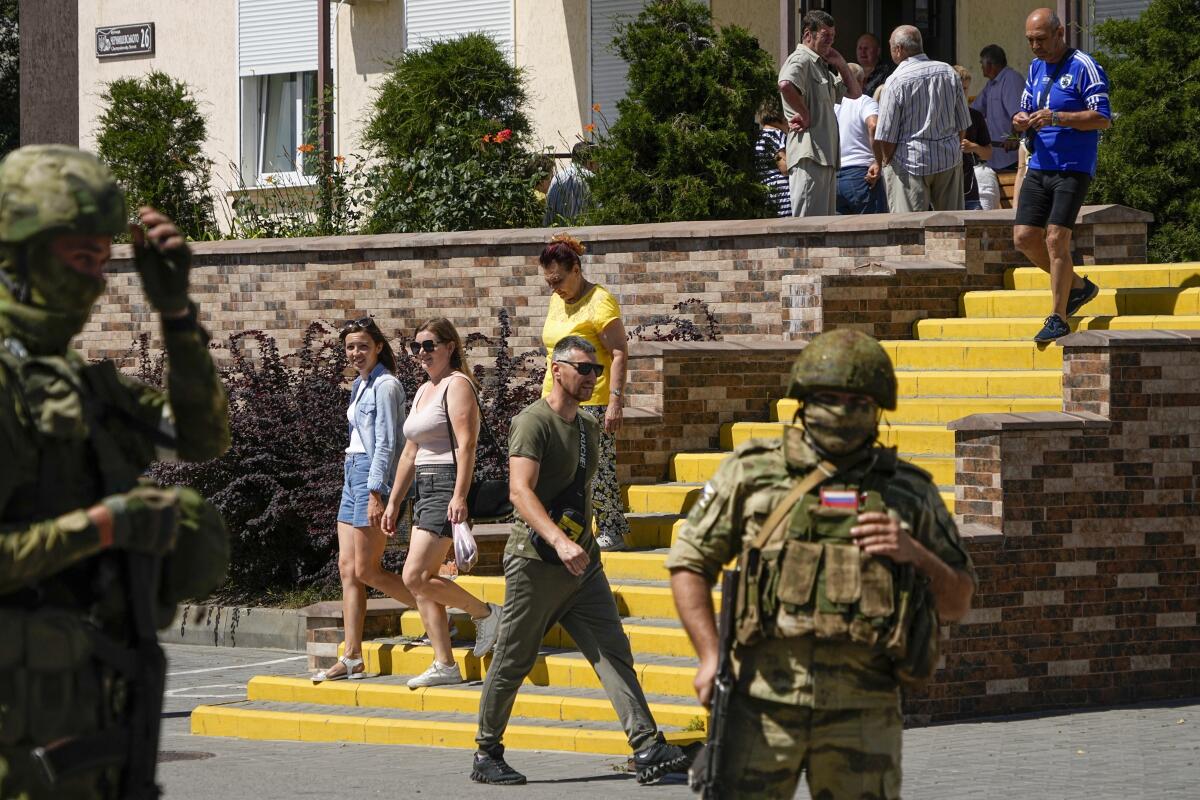
Guerrillas have tied yellow ribbons on buildings where voting is to be held, warning residents that they could be targeted by bombs during balloting.
The resistance ranges from radical activists to teachers and retirees who sing Ukrainian songs in parks and secretly wear yellow and blue ribbons.
“The Russians were expecting that they would be met with flowers, but they faced the fact that most people consider themselves Ukrainians and are ready to offer resistance in various forms, from collecting information to burning and blowing up the occupiers,” said Oleksii Aleksandrov, who owned a restaurant in the southern port of Mariupol.
In one recent gesture of defiance in Mariupol, a young man wrapped in a Ukrainian flag stood on a street next to the theater destroyed by Russian bombs. The photo spread through Ukrainian media, and President Volodymyr Zelensky hailed him in an address to the nation.
Hundreds of evacuees have left Ukraine’s Donetsk region days after the Ukrainian government issued an order to evacuate, though some refuse.
“It was a very brave thing to do, and I would like to thank him for his action,” Zelenskyy said. “This man is one of many people who are waiting for Ukraine’s comeback and won’t accept the occupation under any circumstances.”
Although pro-Moscow sentiment is strong in Ukraine’s mostly Russian-speaking industrial heartland of the Donbas, in the east, a guerrilla movement also has emerged there.
Luhansk Gov. Serhiy Haidai said six Russian troops were wounded last month when their vehicle was blown up by guerrillas in the city of Severodonetsk soon after its seizure. They also have targeted railways, disrupting Russian munitions shipments and other supplies.
“The guerrillas have acted quite successfully,” Haidai told the AP. “They haven’t only spread leaflets. They also have destroyed infrastructure facilities. It helps a lot to slow down the Russian attacks and advances.”
Tymophiy, 12, lost his mother and stepfather in a hail of Russian fire and is now in the care of relatives. His diary is a record of fury and grief.
Observers say the guerrilla movement varies by region and that it is in the interest of both sides to exaggerate its scope.
“The Russians do it to justify their repressions on the occupied territories while the Ukrainians seek to demoralize the Russian forces and extol their victories,” said Vadim Karasev, head of the Kyiv-based Institute of Global Strategies think tank. “It’s hard to believe the tales about Ukrainians feeding Russian soldiers with poisoned cakes, but sometimes myths work better than facts.”
More to Read
Sign up for Essential California
The most important California stories and recommendations in your inbox every morning.
You may occasionally receive promotional content from the Los Angeles Times.
